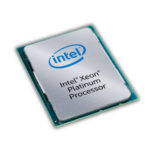In computer graphics, ray tracing is a rendering technique for generating an image by tracing the path of light as pixels in an image plane and simulating the effects of its encounters with virtual objects. “Experienced computer graphics developers that understand how ray tracing works, in conjunction with a deep knowledge of the Intel Xeon Phi processor hardware have created a set of ray tracing kernels that take advantage of the underlying instruction sets and the available number of computing cores.”
Visualizing with Software Rendering with Intel Xeon Phi
There are two main categories or uses where rendering on the Intel Xeon Phi processors should be investigated. The first is what could be called “Professional rendering” and the second, “Scientific visualization.” “Software based visualization, whether for photo-realistic rendering or scientific visualization can be accelerated with a software only approach. This allows for new algorithms to be implemented faster than waiting for the next generation of hardware systems to appear. As the number of computing elements increases, performance can increase as well.”
Visualization in Software using Intel Xeon Phi processors
“Intel has been at the forefront of working with software partners to develop solutions for visualization of data that will scale in the future as many core systems such as the Intel Xeon Phi processor scale. The Intel Xeon Phi processor is extremely capable of producing visualizations that allow scientists and engineers to interactively view massive amounts of data.”
Cycles Per Instruction – Why it matters
To compare how one version of a part of the code is running to another version, since this is a ratio, it is important to keep one of the values constant in order to understand if the optimization is working. If more cpu cycles are being used, but more instructions are being executed, then the ratio could be the same, but this measure will not show any improvement. The goal is to lower the CPI in certain parts of the code as well as the overall application.
Intel Xeon Phi Memory Mode Programming (MCDRAM) in a Nutshell
James Reinders discusses one of the “mode” options that Intel Xeon Phi processors have to offer: memory modes. “For programmers, this is the key option to really study because it may inspire programming changes.”









